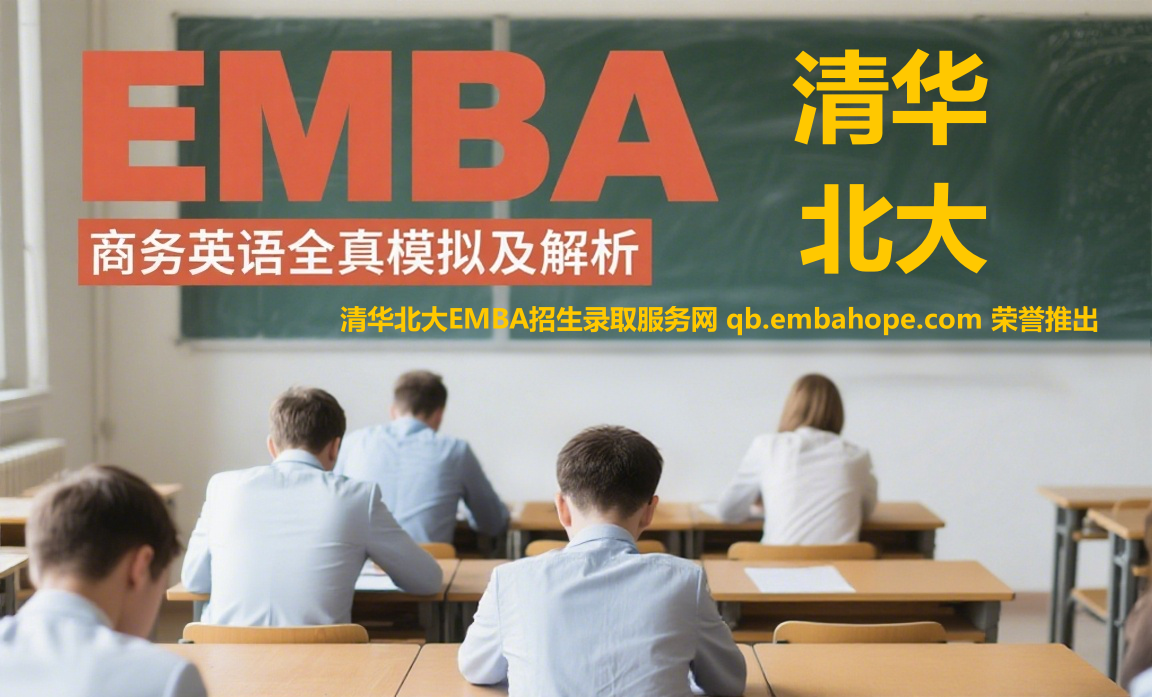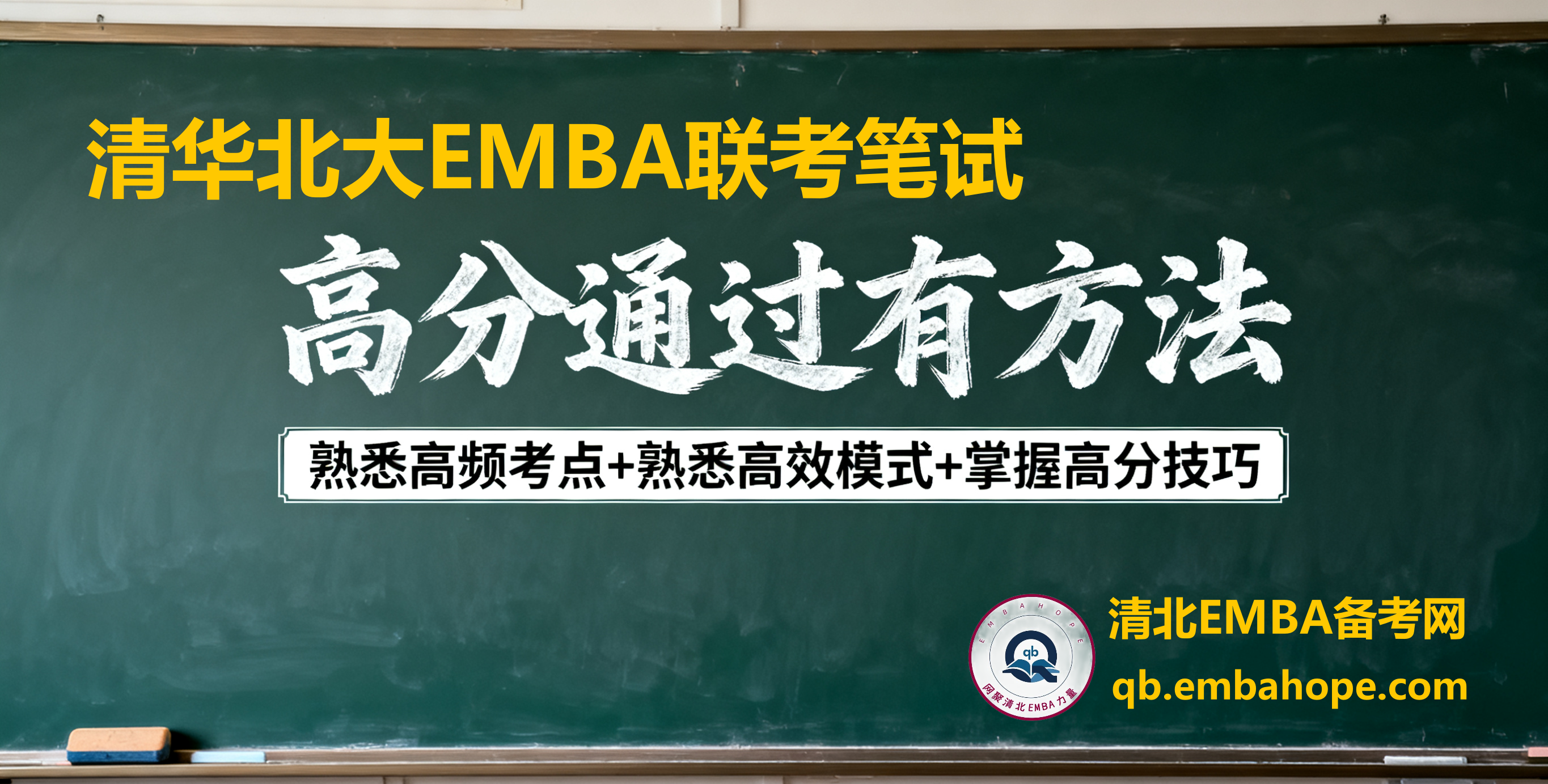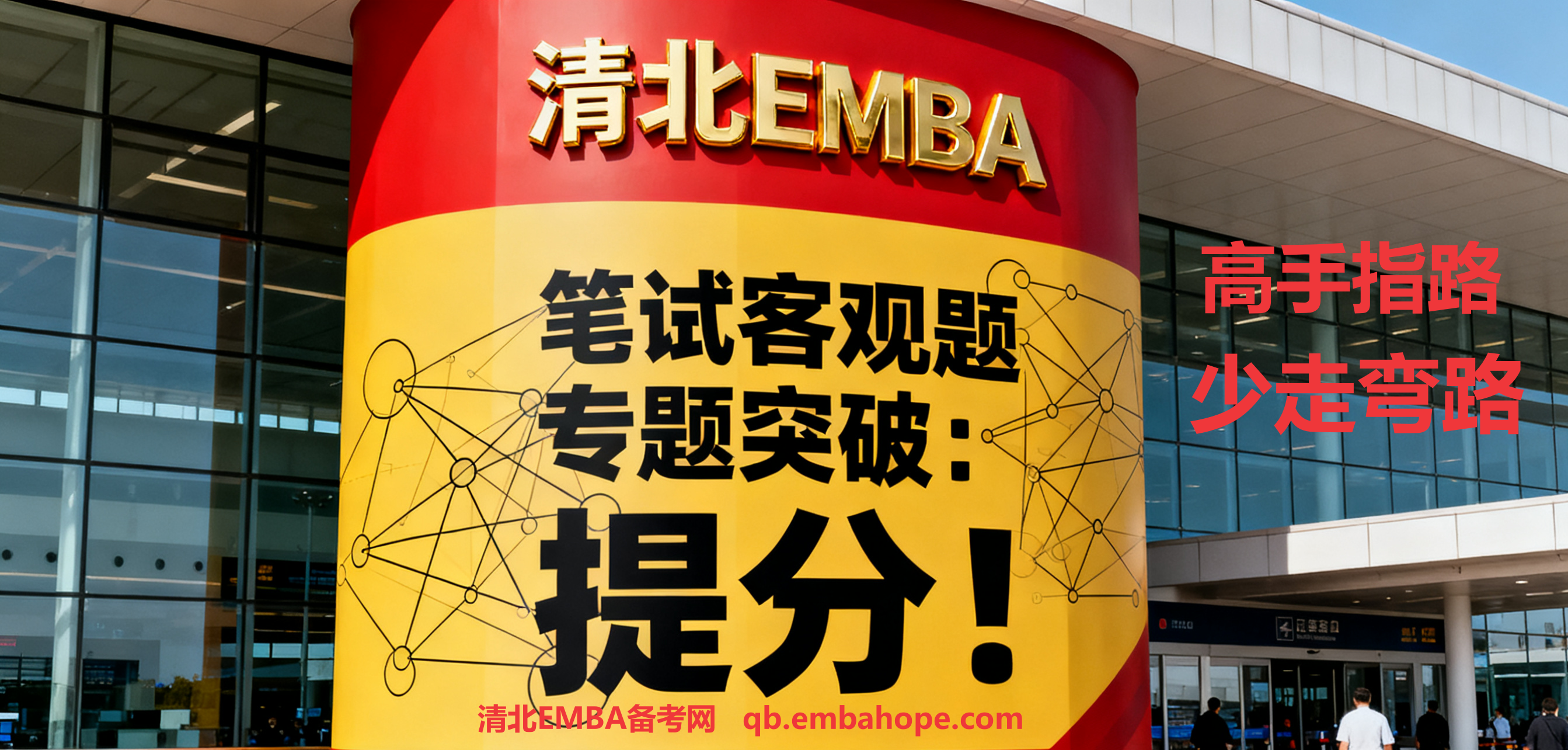
2026年度清华北大EMBA联考英语阅读 基本功测试
说明:
1、下面两篇文章完全按照近年来清华北大EMBA联考英语真题的难度、长度来设计,非常具有针对性,可以测试出你的真实英语水平,
2、每篇文章我们都配有详细的答案解析及全文中文翻译;但是在自己认真做题前请勿看参考按与翻译。
3、请严格按照考试的要求来做,时间不应超过30分钟。每道题2.5分,共25分。
4、如果对清北E英语联考有更详细了解的地方,请点击 清北E联考》》
Directions: Read the following passage. For each question, choose the best answer from the four choices marked A, B, C and D.
Passage 1:
The Leaning Tower of Pisa is one of the world's most famous architectural failures turned into a global icon. Its unintended tilt, begun during construction in the 12th century due to an inadequate foundation on unstable soil, was long considered a flaw that threatened its very existence. For centuries, engineers attempted to halt its gradual descent towards collapse. However, it was not until the late 20th century that a truly innovative and counterintuitive solution was employed: soil extraction.
Previous efforts focused on strengthening the tower—adding supports, injecting grout. These were essentially defensive tactics. The breakthrough came when an international task force of engineers shifted the paradigm. Instead of fighting the lean by making the soft soil stronger, they decided to weaken it on one side. This audacious strategy involved carefully removing small volumes of soil from beneath the raised northern foundation. Gravity then caused the tower to settle slightly in the opposite direction, reducing its lean.
The project was a masterclass in risk management and precision. It required exquisitely calibrated execution; removing too much soil too quickly could have accelerated the catastrophe they were trying to avoid. The team used a network of sensors to monitor the tower's movement in real-time, allowing for minute adjustments. The operation was a stunning success: between 1990 and 2001, the tower was straightened by 45 centimeters, returning it to its 1838 position and securing it for the foreseeable future.
The lesson from Pisa extends far beyond engineering. It is a powerful metaphor for business innovation and problem-solving. It teaches us that the most obstinate problems often cannot be solved by direct opposition. Instead, they require a lateral approach—a willingness to reframe the problem, to sometimes "weaken" established assumptions rather than blindly "strengthening" failing strategies. The tower's enduring allure lies not in its perfection, but in its graceful imperfection and the ingenious human ingenuity that saved it.
Questions:
1、What is the main purpose of the passage?
A. To provide a detailed tourist guide to the Leaning Tower of Pisa.
B. To explain the initial construction mistakes that caused the tower's lean.
C. To describe an innovative engineering solution and its broader lessons for problem-solving.
D. To argue that all old buildings should be preserved using soil extraction.
2、What was the key feature of the "soil extraction" method used to save the tower?
A. It involved adding new materials to strengthen the foundation.
B. It was a simple and quickly executed process.
C. It focused on making the soil stronger on the leaning side.
D. It involved carefully removing soil from under the high side to allow the tower to settle back.
3、The word "counterintuitive" (Paragraph 1) most probably means ________.
A. going against what seems logical or natural
B. highly expensive and complex
C. based on ancient traditional knowledge
D. easily understood and agreed upon
4、Why was the soil extraction project described as a "masterclass in risk management"?
A. Because it was the cheapest option available.
B. Because it required extremely precise execution and continuous monitoring to avoid disaster.
C. Because it was a method that had no risks associated with it.
D. Because it was completed by a single engineer.
5、According to the passage, what is the broader business lesson from the Leaning Tower's salvation?
A. Always invest more resources into failing projects to strengthen them.
B. Direct confrontation is always the best strategy for solving problems.
C. Sometimes, solving a problem requires a lateral approach that reframes it and challenges assumptions.
D. Architectural failures always lead to iconic brands.
Passage2:
In the dynamic landscape of modern business, the mantra "fail fast, fail often" has evolved from a Silicon Valley buzzword to a mainstream strategic imperative. This philosophy encourages organizations to experiment relentlessly, launch minimal viable products, and learn from missteps quickly and iteratively. Proponents argue that in a world of uncertainty, speed of learning is the ultimate competitive advantage. The cost of inaction, they claim, far exceeds the cost of a well-managed failure.
However, a nuanced understanding is required. "Failing fast" is not about glorifying failure or fostering recklessness. It is about creating a sophisticated system for de-risking innovation. It involves setting clear hypotheses for experiments, defining what constitutes "failure" (i.e., the disproving of a hypothesis), and establishing mechanisms to capture and disseminate the lessons learned. Without this structure, failure becomes just that—a failure, rather than a valuable data point.
The cultural implications are profound. For a "fail-fast" culture to thrive, leadership must actively foster psychological safety. Team members must feel safe to report setbacks and critique ideas without fear of blame or punishment. This requires a fundamental shift from a mindset of blame to one of curiosity. Leaders must ask, "What can we learn from this?" rather than "Whose fault is this?".
Ultimately, the goal is not to fail for its own sake, but to accelerate the pace of learning and increase the odds of finding a truly breakthrough innovation. It is a disciplined approach to navigating uncertainty, one that treats small, early failures as a necessary investment in the learning process, thereby avoiding the catastrophic, company-ending failures that can result from clinging too long to a flawed strategy.
Questions:
6、What is the main purpose of the passage?
A. To criticize the "fail fast" approach as a reckless business practice.
B. To explain the concept and prerequisites of a disciplined "fail-fast" strategy.
C. To prove that avoiding failure is the key to long-term business success.
D. To describe the history of the "fail fast" mantra in Silicon Valley.
7、According to the passage, what is the primary competitive advantage in an uncertain world?
A. Having a large amount of financial capital.
B. The speed of learning from experiments.
C. Avoiding any form of failure at all costs.
D. Sticking rigidly to a proven long-term strategy.
8、The word "de-risking" (Paragraph 2) is closest in meaning to ________.
A. avoiding
B. rewarding
C. reducing the risk of
D. celebrating
9、Which of the following is cited as a crucial cultural element for a "fail-fast" approach to work?
A. A strict system of accountability and blame.
B. Psychological safety for team members.
C. Guaranteed financial rewards for all experiments.
D. A highly secretive R&D department.
10、What is the ultimate goal of the "fail-fast" philosophy as described in the passage?
A. To generate as many failures as possible.
B. To create a fun and careless work environment.
C. To accelerate learning and discover breakthrough innovations.
D. To quickly abandon all projects at the first sign of trouble.
答案与解析 
第一篇
正确答案:
1、C; 2、D; 3、A;4、B;5、C
详细解析:
第1题解析:
题型判断: 主旨概括题。此题需要把握全文的写作目的和核心思想。
解题思路: 文章前三分之二的篇幅确实在描述比萨斜塔的工程拯救项目,但其最终目的在最后一段点明:“The lesson from Pisa extends far beyond engineering. It is a powerful metaphor for business innovation and problem-solving.” 后续内容将其上升为一种解决问题的哲学。
选项分析:
A选项:错误。文章并非旅游指南,未提供开放时间、门票等实用信息。
B选项:错误。虽然第一段提到了原因(inadequate foundation),但这只是引子,并非文章主旨。
C选项:正确。准确概括了全文结构:先描述创新解决方案(土壤抽取),再引申其对于解决问题(尤其是商业创新)的普遍启示。
D选项:错误。文章结论是具体案例的启发,并未做出如此绝对和广泛的建议。
结论: C选项最全面、准确地概括了文章的写作目的。
第2题解析:
题型判断: 细节理解题。此题需要定位并理解“土壤抽取”方法的具体细节。
解题思路: 问题关键词是“soil extraction method”。答案在第二段。
定位原文: 第二段明确说明:“...they decided to weaken it on one side. This audacious strategy involved carefully removing small volumes of soil from beneath the raised northern foundation.”
选项分析:
A选项:错误。这是“previous efforts”的做法,与土壤抽取法相反。
B选项:错误。第三段提到它需要“exquisitely calibrated execution”(精细校准的执行),说明它既不简单也不快速。
C选项:错误。这与该方法“weaken the soil”的核心思想完全相反。
D选项:正确。是原文“removing small volumes of soil from beneath the raised northern foundation”的同义转述。
结论: 直接对应原文细节,D选项正确。
第3题解析:
题型判断: 词汇语义题。此题需要通过上下文推断生词的含义。
解题思路: “counterintuitive”由“counter-”(反)和“intuitive”(直觉的)构成。上下文指出,传统的思路是“加强”(strengthening),而新方法是“削弱”(weaken)。这种“通过削弱来加固”的思路,显然是违反一般人第一直觉的。
选项分析:
A选项“going against what seems logical or natural”(违背看似逻辑或自然的东西):这与词根和上下文完美契合。
B选项“highly expensive and complex”(高度昂贵和复杂):可能是事实,但这不是“counterintuitive”一词的含义。
C选项“based on ancient traditional knowledge”(基于古代传统知识):与文中的“innovative”(创新的)意思相悖。
D选项“easily understood and agreed upon”(易于理解和同意):与“counterintuitive”的意思正好相反。
结论: 根据上下文推断,A选项为最佳答案。
第4题解析:
题型判断: 细节理解题。此题需要理解为什么该项目被称为风险管理范本。
解题思路: 问题关键词是“masterclass in risk management”。答案在第三段。
定位原文: 第三段解释道:“It required exquisitely calibrated execution; removing too much soil too quickly could have accelerated the catastrophe... The team used a network of sensors to monitor the tower's movement in real-time, allowing for minute adjustments.”
选项分析:
A选项:错误。文章未提及成本是最低选项。
B选项:正确。准确概括了原文:极高的精度要求(exquisitely calibrated execution)和实时监控(monitor... real-time)以避免灾难(avoid disaster)。
C选项:错误。文中明确提到存在引发灾难(catastrophe)的风险。
D选项:错误。第一段提到是“an international task force”(国际工作组)。
结论: 直接对应原文细节,B选项正确。
第5题解析:
题型判断: 细节理解题/推理判断题。此题需要定位文章最后一段所阐述的普遍道理。
解题思路: 问题关键词是“broader business lesson”。答案在最后一段。
定位原文: 最后一段明确陈述:“It teaches us that the most obstinate problems often cannot be solved by direct opposition. Instead, they require a lateral approach—a willingness to reframe the problem, to sometimes "weaken" established assumptions rather than blindly "strengthening" failing strategies.”
选项分析:
A选项:错误。这是文章所批判的“盲目加强”(blindly strengthening)旧策略的做法。
B选项:错误。这是“direct opposition”(直接对抗),文章明确指出顽固问题通常不能用此方法解决。
C选项:正确。是原文“lateral approach”、“reframe the problem”、“challenge assumptions”的完美总结和同义转述。
D选项:错误。结论过于绝对(always),文章只是一个成功的特例。
结论: 直接对应原文细节,C选项正确。
全文翻译 (Full Translation)
比萨斜塔是世界上最著名的建筑失败案例之一,却转而成为了全球标志。由于其建造在不稳定土壤上的地基不牢,它在12世纪建造期间就开始无意中倾斜。长期以来,这种倾斜被视为一个威胁其存在的缺陷。几个世纪以来,工程师们试图阻止它逐渐下沉直至倒塌。然而,直到20世纪末,一个真正创新且反直觉的解决方案才被采用:土壤抽取。
之前的努力集中于加固塔身——增加支撑物、注入浆液。这些本质上是防御性策略。突破来自于一个国际工程师工作组转变了范式。他们决定不再通过加固软土来对抗倾斜,而是选择在某一侧削弱它。这一大胆的策略包括从较高的北侧地基下小心地移除少量土壤。随后,重力使塔身向相反方向略微沉降,从而减少了倾斜。
该项目是风险管理和精准操作的典范。它需要精细校准的执行;移除太多土壤或太快都可能加速他们试图避免的灾难。团队使用了一个传感器网络来实时监测塔的移动,以便进行微调。该行动取得了惊人的成功:在1990年至2001年间,塔被矫正了45厘米,使其恢复到1838年的位置,并在可预见的未来确保了其安全。
比萨斜塔带来的教训远不止于工程领域。它是商业创新和问题解决的一个强大隐喻。它告诉我们,最顽固的问题通常无法通过直接对抗来解决。相反,它们需要一种横向思维——一种重新定义问题的意愿,有时要去“削弱”既定的假设,而不是盲目地“加强”失败的战略。比萨斜塔持久的魅力不在于它的完美,而在于它优雅的不完美,以及拯救了它的非凡的人类智慧。
第二篇
答案与解析 (Answers and Explanations)
正确答案:
6、B;7、B;8、C;9、B;10、C
详细解析:
第6题解析:
题型判断: 主旨概括题。此题需要把握全文的写作目的和核心思想。
解题思路: 文章开头引入“快速失败”这一理念,但并未停留于表面。第二段以“However”转折,强调需要“nuanced understanding”( nuanced understanding),并指出其本质是“creating a sophisticated system for de-risking innovation”。后续段落继续阐释其所需的文化基础和最终目的。
选项分析:
A选项:错误。作者并非批评,而是进行客观分析和解释,指出其需要纪律和系统。
B选项:正确。准确概括了全文目的:解释一个“有纪律的”快速失败策略的概念及其先决条件(如系统、文化)。
C选项:错误。与文章主旨完全相反,文章主张从失败中学习,而非避免失败。
D选项:错误。文章首句提到其起源,但历史描述并非文章主旨,只是引子。
结论: B选项最全面、准确地概括了文章的写作目的。
第7题解析:
题型判断: 细节理解题。此题需要定位文章中的具体信息。
解题思路: 问题关键词是“primary competitive advantage”和“uncertain world”。答案在第一段后半部分。
定位原文: 第一段明确陈述:“Proponents argue that in a world of uncertainty, speed of learning is the ultimate competitive advantage.”(支持者认为,在一个充满不确定性的世界里,学习的速度是最终的竞争优势。)
选项分析:
A选项:未提及。资金重要,但并非本文讨论的重点。
B选项:是原文“speed of learning”的同义转述,是正确答案。
C选项:与文章核心观点完全矛盾。
D选项:与文章最后一句“clinging too long to a flawed strategy”所表达的观点相悖。
结论: 直接对应原文细节,B选项正确。
第8题解析:
题型判断: 词汇语义题。此题需要通过上下文推断生词或关键词的含义。
解题思路: “de-risking”是一个复合词,前缀“de-”常有“减少、去除”的含义。关键是看上下文。它修饰的是“innovation”(创新),而创新本身是有风险的。后面一句解释说这是通过设定假设、定义失败、建立学习机制来实现的。所有这些措施都是为了“降低、减少”创新的风险。
选项分析:
A选项“avoiding”(避免):完全避免风险也就避免了创新,不符合文意。
B选项“rewarding”(奖励):不符合“de-”的构词法和上下文逻辑。
C选项“reducing the risk of”(减少...的风险):最符合构词法和对下文的解释。
D选项“celebrating”(庆祝):不符合文意。
结论: 根据上下文推断,C选项为最佳答案。
第9题解析:
题型判断: 细节理解题。此题询问实现“快速失败”文化所需的具体条件。
解题思路: 问题关键词是“crucial cultural element”。答案在第三段。
定位原文: 第三段主题句直接点明:“For a 'fail-fast' culture to thrive, leadership must actively foster psychological safety.”(要让“快速失败”文化蓬勃发展,领导层必须积极培养心理安全感。)
选项分析:
A选项:与“psychological safety”和“without fear of blame”的理念直接冲突。
B选项:是原文“psychological safety”的直接表述,是正确答案。
C选项:文章未提及“guaranteed financial rewards”,属于无中生有。
D选项:文章未提及,创新需要信息分享而非保密。
结论: 直接对应原文细节,B选项正确。
第10题解析:
题型判断: 细节理解题/推理判断题。此题需要理解该策略的最终目的。
解题思路: 问题关键词是“ultimate goal”。答案在文章最后一段,尤其是开头句。
定位原文: 最后一段明确陈述:“Ultimately, the goal is not to fail for its own sake, but to accelerate the pace of learning and increase the odds of finding a truly breakthrough innovation.”(最终,目标不是为了失败而失败,而是为了加速学习进程,并增加找到真正突破性创新的几率。)
选项分析:
A选项:错误。失败是手段,不是目的。
B选项:错误。“fun and careless”与文中的“disciplined approach”相矛盾。
C选项:正确。是原文“accelerate the pace of learning and increase the odds of finding... innovation”的完美同义转述。
D选项:错误。这是对“fail fast”的肤浅和错误理解。文中强调是基于假设和数据的“well-managed failure”。
结论: 直接对应原文细节,C选项正确。
全文翻译 (Full Translation)
在现代商业的动态格局中,“快速失败,经常失败”这句口号已经从硅谷的流行语演变为主流的战略要义。这种哲学鼓励组织不懈地进行实验,发布最简可行产品,并快速、迭代地从错误中学习。支持者认为,在一个充满不确定性的世界里,学习的速度是最终的竞争优势。他们声称,不作为的代价远远超过管理良好的失败的代价。
然而,我们需要一种 nuanced understanding( nuanced understanding)。“快速失败”不是 glorifying failure( glorifying failure)或 fostering recklessness( fostering recklessness)。它是为了建立一个复杂的系统来 de-risking(降低风险)创新。它涉及为实验设定清晰的假设,定义什么构成“失败”(即,证明一个假设不成立),并建立机制来捕捉和传播所学的教训。没有这种结构,失败就仅仅是失败,而不是一个宝贵的数据点。
其文化影响是深远的。要让“快速失败”文化蓬勃发展,领导层必须积极培养心理安全感。团队成员必须感到安全,能够汇报挫折和批评想法,而不必担心受到责备或惩罚。这需要从 blame mindset( blame mindset)到 curiosity mindset( curiosity mindset)的根本转变。领导者必须问:“我们能从中学到什么?”而不是“这是谁的错?”。
最终,目标不是为了失败而失败,而是为了加速学习进程,并增加找到真正突破性创新的几率。这是一种 navigating uncertainty( navigating uncertainty)的有纪律的方法,它将早期的小失败视为学习过程中必要的投资,从而避免了因过于长久地坚持一个有缺陷的战略而可能导致的灾难性的、让公司倒闭的失败。





猜您喜欢:
1、清华北大EMBA面试1对1密训辅导 》》
2、清华北大EMBA联考名师辅导》》
3、增值服务 》》


